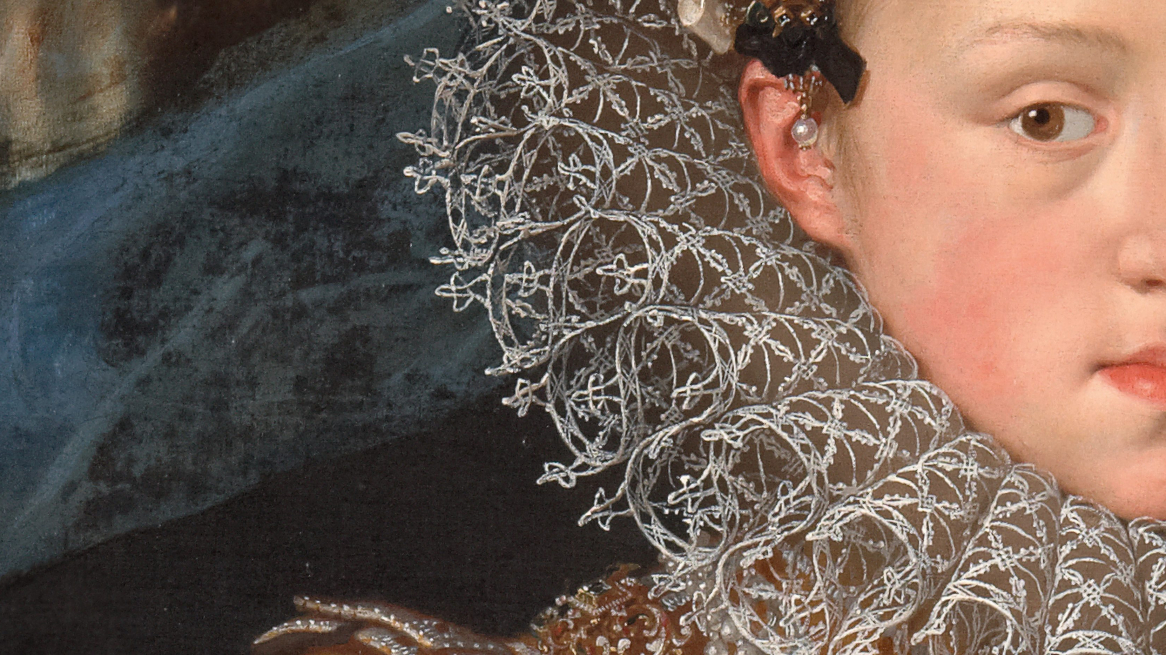
A princely fashion show will be staged at Ambras Castle near Innsbruck until 3 October 2021. On display are around 130 pieces of paintings, clothing and accessories from the collections of the Kunsthistorisches Museum in Vienna and Ambras Castle, as well as from national and international collections.
FROM RENAISSANCE TO BAROQUE: FASHION NOT ONLY FOR PLEASURE!
The exhibition is a real gem, for several reasons. Firstly, because you have the chance to admire many original Renaissance and Baroque garments, which is a very rare opportunity since fabrics are not easily preserved. Secondly, the curators have chosen to focus on the representation of fashions from the Renaissance to the Baroque, displaying garments and accessories in parallel with the Habsburg portraits from the Ambras Castle collection. In this way we can move from the original to its pictorial 'reproduction' and also understand the symbolic role of clothes in the representation of power. Finally, because being able to see such beautiful objects is truly a pleasure.
Detail of the portrait of Duke Augustus of Saxony by Lucas Cranach the younger, after 1565 © KHM-Museumsverband
WEAR YOUR STATUS
Before entering the exhibition halls, which are spread over the entire second floor of the upper castle, a vademecum (in German or English) is made available to visitors. I strongly recommend that you pick it up, as it will accompany you from room to room and provide you with very interesting information about the exhibits.
Fine textiles have always played an important role as a means of representation and expression of high social status. Only anelite public could afford fine fabrics and had the opportunity to dress in the latest fashion. Portraits in which prominent personalities allowed themselves to be painted in sophisticated clothes still provide us with information about the characteristics of these former wardrobes. Today, as in the past, the viewer is fascinated by the wealth of ideas in their creation and the fine materials used.
THE IMPORTANCE OF "ACCESSORIES
It wasn't just the richness of the fabrics and the latest fashions that were symbols of power and wealth. Accessories also told a lot about a person. Shoes were so finely decorated and made of precious materials that they were extremely delicate: deliberately more beautiful than suitable for walking. Handkerchiefs trimmed with precious lace, were made to be shown (and in fact we see several of them in the portraits) and not for blowing one's nose. Gloves were not meant to protect from the cold, but to decorate the hands (in the exhibition there is a pair that is reversible, one side made of leather and the other of red silk).
Women's shoes in the exhibition "Mode Schauen" in Schloss Ambras, 1717-1730 © SKD, Photo Hans-Peter Klut
A LOOK UNDER THE ROBE
What did the characters portrayed wear? And how were their clothes made? A Venetian fashion popular in the 16th century in the noble courts were high wedges for ladies. They were not visible, as the skirts came down to the floor. They slimmed the figure, but walking on them was very difficult and to avoid falling, ladies were supported by servants. In Pietro Bertelli's 16th century book on the clothes of the nobility we can see them depicted, peeking under the skirt of the figure. The ruffs had a metal structure that gave them the right support. The clothes were enriched with applications, real jewels, which were sewn on the fabrics. The eighteenth-century corsets were made to thin the waist of the ladies, because the ideal of beauty provided a "wasp waist".
Late 18th century corset in the exhibition "Mode Schauen" at Schloss Ambras © Germanisches Nationalmuseum, Photo Jürgen Musolf
CURIOUS MODE
There are many curiosities to learn, such as the "belt" sable. A tanned sable skin, which was worn around the waist, whose head was reproduced in precious metals and decorated with stones. It served not only to keep fleas off the wearer's body, but was also believed to protect against misfortune. It is also interesting to note how children's clothes reproduced in miniature those of noble adults. Another curious fact concerns the Emperor Maximilian II, who was buried with a hat, adorned with feathers and jewels. Another peculiarity concerns Duke Augustus of Saxony and, to be precise, his finely knitted trousers made of yellow silk, which testify how the cut of his clothes was designed to make certain "dowries" visible. In the case of trousers like these, the shell of fabric - called "brachetta" - which enclosed the genitals, becomes, during the sixteenth century, padded and rigid to make evident the virility.
And the rest I'll let you discover directly at the exhibition!
Trousers of Duke Augustus of Saxony before 1555 in the exhibition "Mode Schauen" at Schloss Ambras © SKD, Foto Jürgen Lösel
USEFUL INFORMATION
Mode schauen - Fürstliche Garderobe vom 16. bis 18. Jahrhundert
Until 3 October 2021
Open daily from 10 am to 5 pm
Admission
full price 16 euros, concessions 12 euros
free for under-19s and Innsbruck Cardholders
Schloss Ambras
Schlossstraße 20, Innsbruck
Parking available
To reach Schloss Ambras by public transport, look here
Rate this article
Show me the location on the map
A visual artist from Milan who not only works with brushes and canvases but also loves writing about art, culture, music, design and creativity.
Similar articles
The museum in Innsbruck's Arsenal "Museum im Zeughaus" was reopened on April 6,…
The Ferdinandeum regional museum is open until June 30, 2024, with exhibitions and events. Then a…
A purely Tyrolean film project aims to shed new light on the novel story of probably…
With the Alpine Jitterbugs, Innsbruck has a club that is passionately dedicated to swing dancing. The Alpine…










